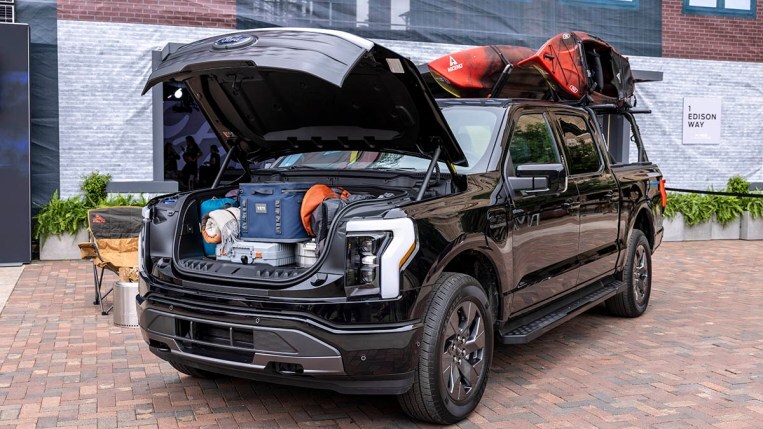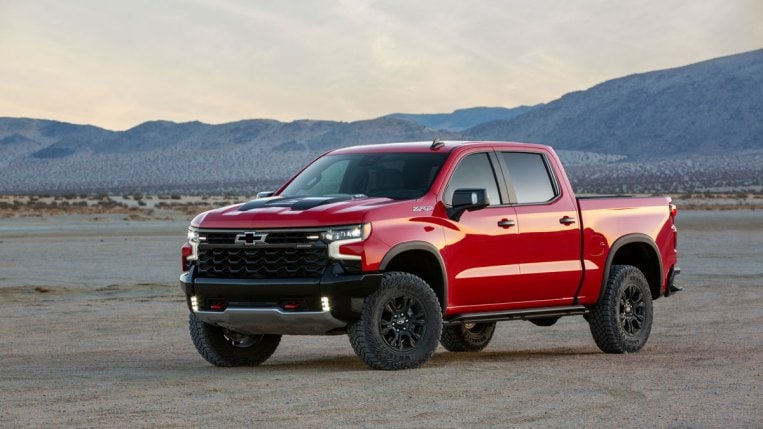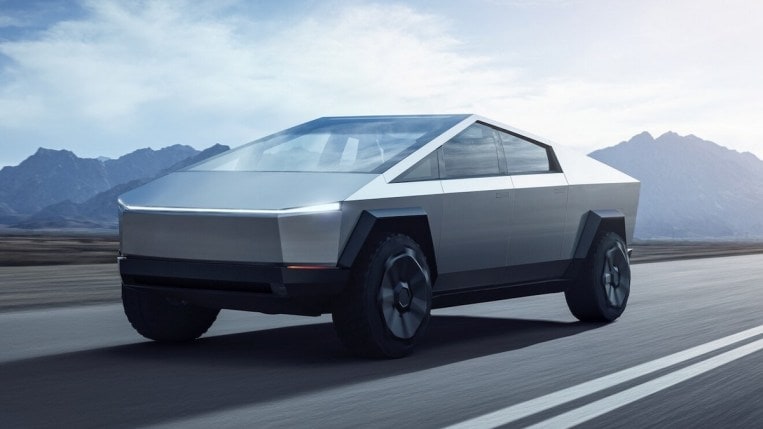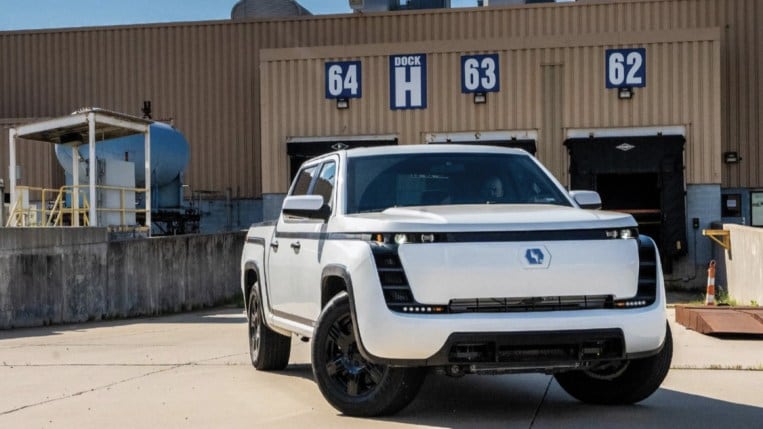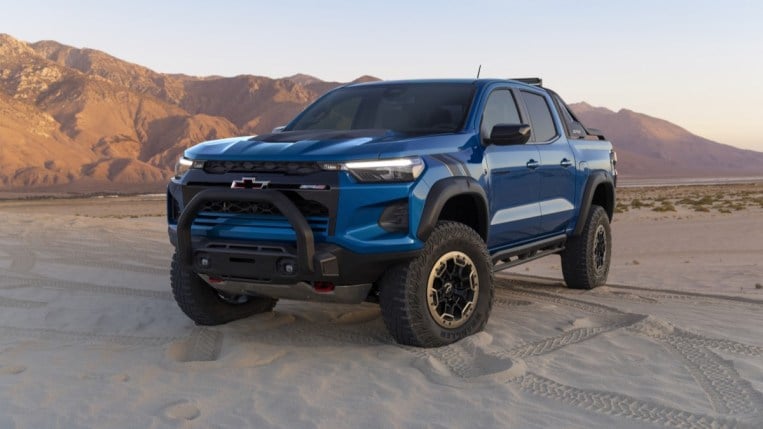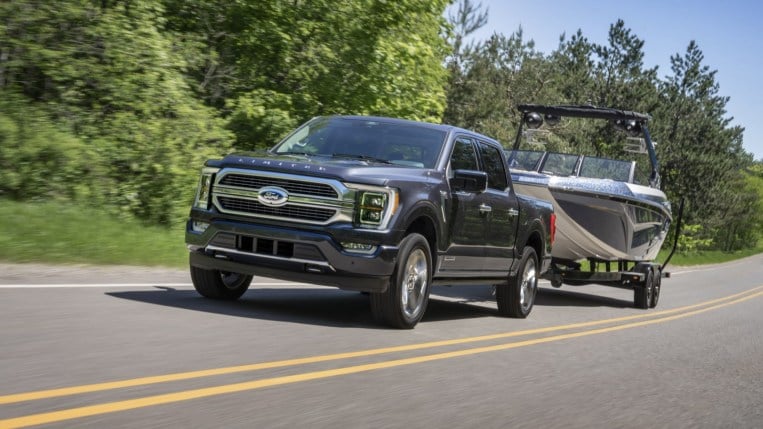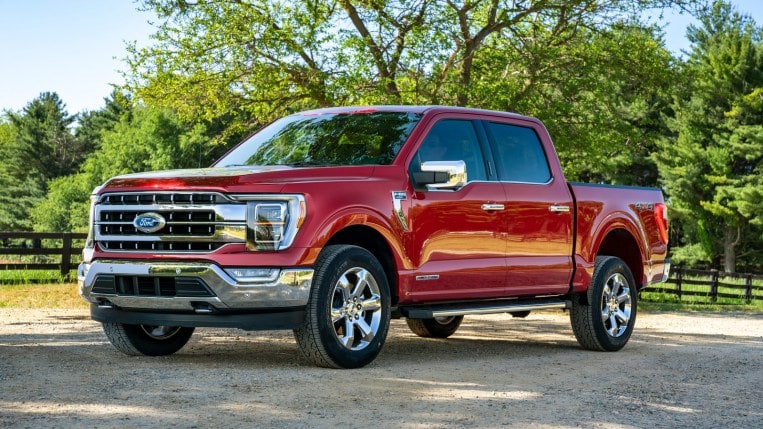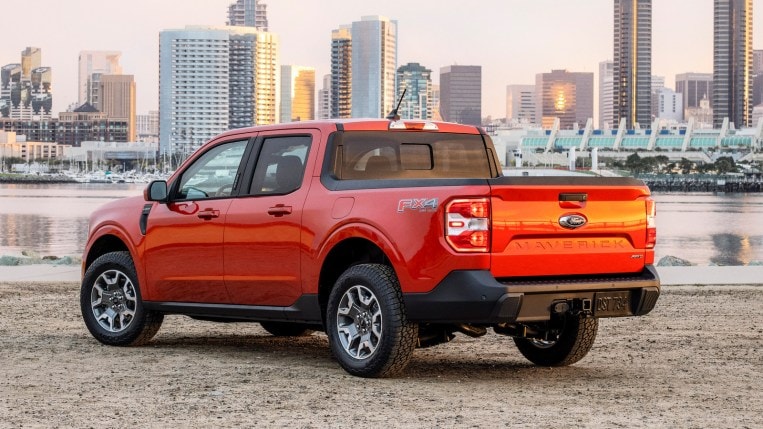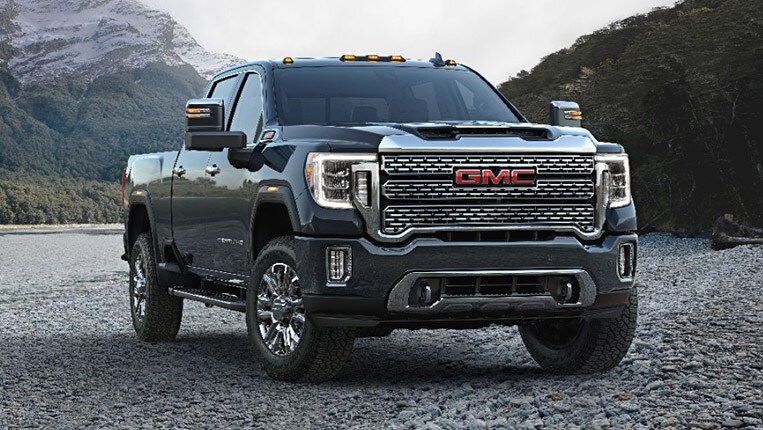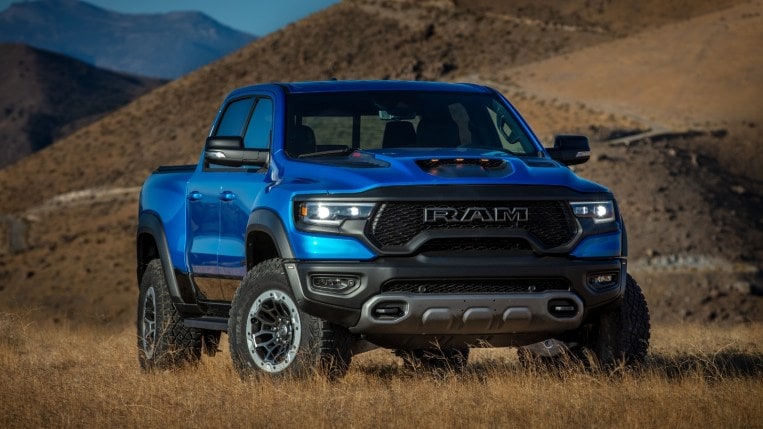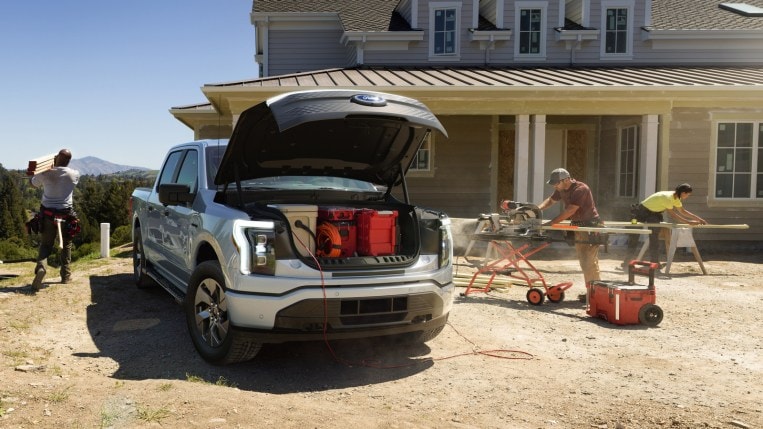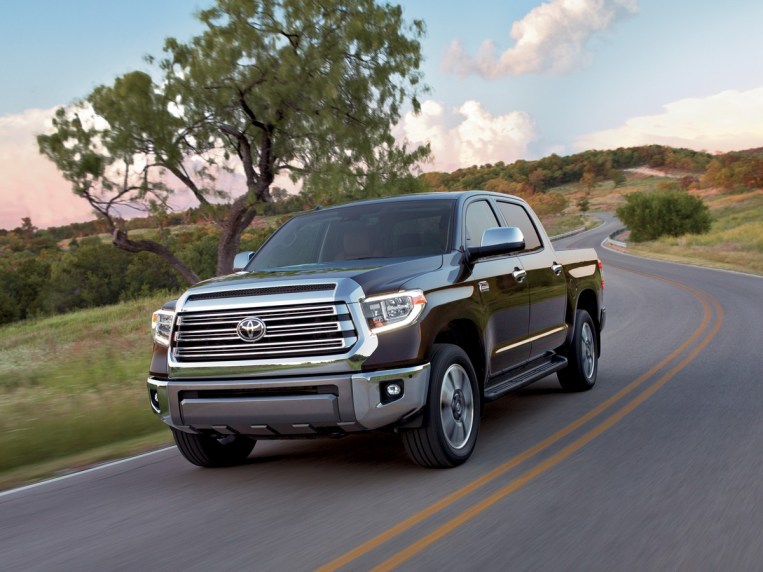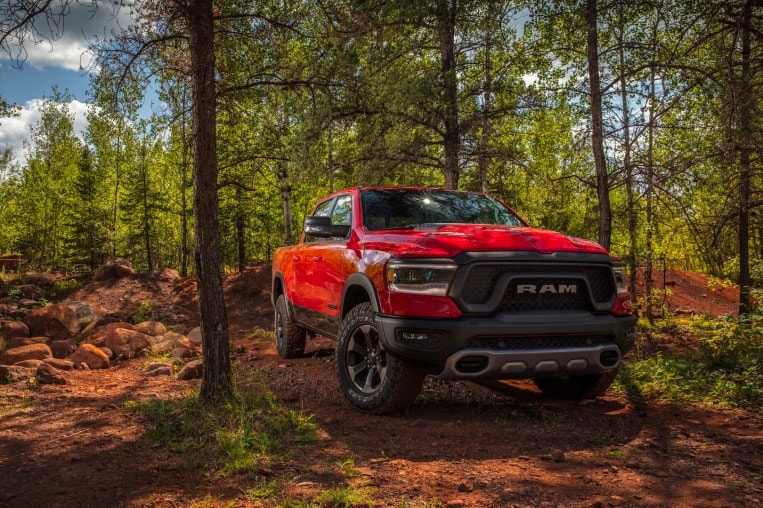You can’t beat a truck for versatility and practicality. Pickup trucks can do it all. Towing a camper or boat to the lake, transporting bags of mulch from the garden store, or tailgating before the big game is more manageable and better with a truck. Trucks are a must-have on a job site, ranch, or farm.
When appropriately equipped, a truck can serve as a snowplow, a camper, a fire-fighting vehicle, and much more. Furthermore, pickups can make you friends because, at some point, everyone needs a truck or at least a friend with a truck. Every phone call you receive that begins with, “Hey, buddy,” will probably be someone wanting to borrow you and your truck for a mission of some sort.
Wildly popular, trucks continue to live in carmakers’ best-selling lists. The best-selling vehicle in America for 45 straight years is a pickup truck: the Ford F-Series. Last year, Americans bought more trucks than passenger cars (although we did buy even more SUVs.).
And there’s no sign the popularity of trucks will slow anytime soon. Recently, new categories of trucks began appearing, including electric pickups and the first compact trucks in a generation.
In this guide, you’ll learn about today’s trucks and future pickup trucks. Which truck is best for you and your family?
Why Are Pickup Trucks So Popular?
A significant contributor to the high standing of trucks is the availability of different cab styles, bed sizes, and drivetrains. Trim levels and option packages allow two trucks of the same make and model to have wildly different price tags. For example, the 2023 GMC Sierra 1500 starts at $36,400. However, the most expensive configuration with a couple of option packages can cost over $80,000.
This guide will help you determine which truck works best for you.
Future Trucks: What’s Coming for 2023 and 2024
Here are a few new pickups worth considering near the close of 2022 and looking ahead at 2023 and 2024.
2022 Chevrolet Silverado 1500 ZR2
Although it arrived in showrooms as a late 2022 entry, the Silverado ZR2 deserves a shoutout. The ultimate off-road Silverado, it’s the Bow-tie’s response to the Ford F-150 Raptor and the Ram 1500 TRX. Less extreme than either of these amped-up competitors, the ZR2 has a 2022 base price of $68,400, not including destination fees.
2024 Chevrolet Silverado EV
Taking on the likes of the F-150 Lightning and Rivian R1T, the Silverado electric vehicle (EV) is an all-electric truck with an estimated range of more than 400 miles. (GMC is also releasing a 2023 Sierra EV.) Boasting 4-wheel drive (4WD) on all EV models, the Silverado EV will tow a maximum of 10,000 pounds when appropriately equipped. This spec matches the F150-Lighting but is slightly less than the R1T’s 11,000 pounds. When the 2024 Silverado EV arrives in showrooms in 2023, the rumored starting price will be about $40,000.
Tesla Cybertruck (Possibly in 2023)
Tesla continues to drop details of its space-age-looking EV Cybertruck. It may launch in 2023 or 2024. Although the exterior styling looks like George Jetson penned it, the wrapper is scratch-resistant stainless steel. Tesla claims it will offer a range of up to 500 miles and a towing capacity of up to 14,000 pounds. Last spring, the company said the Cybertruck’s pricing would begin at around $40,000, but then in summer, pulled back on the price without offering more detail. Of course, Tesla must get it to market so we can witness these marvels for ourselves.
2023 Lordstown Motors Endurance
As of this writing, the assembly line is rolling out the first units of this EV from a former GM plant in Lordstown, Ohio. Issues have plagued this startup serving the commercial fleet business. If nothing else goes wrong, the Lordstown will be available by early 2023, if not sooner. Pricing will start around $53,000 for this pickup with a reported 600 horsepower. The maximum estimated range is about 250 miles.
Canoo Pickup Truck (Possibly in 2023)
There is very little information about this EV from California startup Canoo other than it may be arriving in 2023. According to its website, it will offer many innovative features like multiple fold-down work benches, a 2-foot bed extension, and a modular cargo box. It will have an estimated 200-plus-mile range. Canoo is currently accepting preorders.
2023 Chevrolet Colorado
Chevy is abandoning the V6 and the Duramax diesel powertrains when it introduces the next-generation Colorado. The sole engine will be a turbo 4-cylinder. Inside, the Colorado features an 11.3-inch touchscreen. Chevy hasn’t announced pricing. However, we believe it will start below $30,000.
2023 GMC Canyon
As a kissing cousin of the Colorado, the 2023 GMC Canyon is wholly redesigned but will share the Chevy’s turbo 4-cylinder engine. A new off-road AT4X trim level provides nearly 11 inches of ground clearance. Pricing will probably start around $40,000. Trucks hit dealerships in the first half of 2023.
2023 Ford Ranger
When the next-generation 2023 Ford Ranger arrives, it will retain its current turbocharged 4-cylinder engine. A 10.1-inch touchscreen will oversee the infotainment system. Pricing will probably begin around $28,000.
2024 Toyota Tacoma
Following in the footsteps of the redesigned 2022 Toyota Tundra, the next-generation Tacoma will likely go on sale in 2023 as a 2024 model. So far, the little we know about the next-gen Tacoma is more rumor than fact. America’s best-selling midsize pickup, the Tacoma, will continue with body-on-frame construction. We guess pricing will begin under $30,000.
Why You Need a Pickup Truck
For towing, a full-size SUV or midsize SUV with a torquey engine and tow package can do nearly everything a pickup truck can. Furthermore, SUVs are often a bit easier to live with day-to-day. Why, then, would you need a truck?
- Thanks to their open cargo beds, trucks offer more capacity for carrying stuff than any coupe, sedan, SUV, or minivan. Moreover, they separate their loads from the passenger cabin. Pickup buyers feel this separation is preferable, especially when regularly carrying building materials, dirt, plants, or anything else that leaves a mess behind.
- Trucks can typically tow more than even the most powerful SUVs. Consequently, if large trailers or big boats are part of your tow routine, you’re probably better off with a pickup.
- Trucks hold their resale value better than SUVs. Many of today’s vehicles stay in good running condition longer than most just a generation ago. Therefore, chances are you will hold onto your next vehicle for a long time. The average car on American roads is over 12 years old. When the time does come to part ways with your truck or SUV, the resale value for used trucks is historically better than for old SUVs.
- Today’s pickup trucks are also on the way to overcoming decades of mediocre safety performance. For example, in the class of 2022, the Hyundai Santa Cruz, the Ford F-150 Crew Cab, and the Ram 1500 received the Insurance Institute for Highway Safety’s (IIHS) Top Safety Pick award. Even more impressive, the redesigned 2022 Toyota Tundra earned the IIHS Top Safety Pick+ award.
Why You Don’t Need a Pickup Truck
If you don’t haul a thing or two regularly, you might be happier with an SUV. Some are even built on the same ladder frames as pickups and can handle rough weather and off-road driving just as well. For example, the Chevy Tahoe and the Toyota 4Runner are truck-based SUVs.
SUVs almost always offer better fuel economy, thus saving you money in the long run. Additionally, their suspensions are tuned for more passenger comfort. Moreover, SUVs are more likely to rack up safety accolades than pickup trucks.
Types of Pickup Trucks
Typically, pickup trucks get differentiated by size. If you’re truck shopping, you’re most likely going to find yourself comparing pickups to similarly sized competitors. However, it makes sense to consider a smaller truck in some cases.
Full-Size Trucks
Full-size pickup trucks are the most popular trucks in America. Therefore, they are revered as the flagship products of the Detroit Three automakers. In 2021, the three best-selling vehicles in America were full-size trucks: the Ford F-150, Ram 1500, and Chevy Silverado, respectively. U.S. car and light truck sales in 2021 totaled just over 15 million vehicles. These three full-size pickup trucks accounted for 1.85 million of those sales.
You may occasionally hear full-size pickups referred to as “half-ton trucks” because most have a payload capacity of at least 1,000 pounds. Still, that terminology has grown outdated and is not particularly accurate for today’s trucks.
Our 2022 Best Buy in the category is the Ford F-150.
General Motors offers the Chevy Silverado and the GMC Sierra. Although they aren’t identical, they are very similar full-size pickups. The Sierra’s starting price is slightly higher than the Silverado’s, and the GMC truck carries more standard equipment. But, by the time you add typical options and trim levels, the two are often so closely priced that it makes sense to comparison-shop them. The Sierra added another nearly 250,000 sales to that 1.85 million number.
The Toyota Tundra and Nissan Titan, both full-size pickups, have garnered loyal followings, though never in numbers to threaten the primacy of the Big Three.
Midsize Trucks
Smaller than full-size trucks, midsize pickups don’t usually sell as briskly. Not one of them cracked the 2021 top-ten best-selling vehicles list. The best-selling midsize truck is the Toyota Tacoma. Its key competitors are the Nissan Frontier, Chevy Colorado, and Ford Ranger.
Although they don’t sell in the same numbers as full-size trucks, midsize trucks are an ideal solution for many buyers. You might imagine they’re less capable than full-size trucks, but that isn’t always the case. A midsize truck may be a bit less potent than its full-size cousin. But crucially, it also weighs less. This nugget is essential because vehicles consume much power just moving themselves.
In base configuration, most midsize trucks can haul and tow loads similar to what a base-model full-size truck can carry. Their smaller beds accommodate less volume but can move nearly as much weight as a full-size truck. Moreover, their moderate size makes them easier to handle in traffic and parking lots.
Compact Trucks
Although American drivers once prized compact trucks, they all but disappeared from showrooms by the turn of the 21st century. What had been compact trucks, like the Tacoma, grew into midsize trucks, leaving a void. Compact trucks were bound to make a comeback with their popularity based on solid mileage numbers, easy maneuverability, and a fair degree of practicality.
Last year, automakers finally expanded that market segment, launching the Ford Maverick and Hyundai Santa Cruz. Both excel as daily drivers because they are more fuel-efficient and easy to live with, even in urban environments. True, a compact truck’s smaller cargo box can’t compete with the bed of a full-size truck, but it can accommodate a weekend bike trip or garden-center haul.
See our Ford Maverick vs. Hyundai Santa Cruz Comparison.
Heavy Duty Trucks
Heavy-duty trucks like the Ram 2500 or GMC Sierra 2500 HD are built on the same frames as full-size trucks but stretched to proportions that rarely make sense for anyone who isn’t using them professionally.
They make great work trucks, though, with payload and towing capacities well beyond what any other truck can claim. Six-wheeled “dually” models are the champions of towing. They can pull the largest boats and horse trailers; however, they cost more to buy and maintain.
High-Performance Trucks
Just as car buyers have an appetite for high-performance sports cars, truck buyers sometimes seek vehicles pushing automotive engineering limits. In the truck world, these are usually high-performance models of regular trucks.
But their capabilities are highly specialized, so they are often not as capable in day-to-day usage as the trucks they’re based on. For instance, Ford’s 2022 F-150 Raptor runs like an off-road beast with arguably the most capable production suspension ever devised. But its payload capacity was lower than any other F-150 at its release. The Ram TRX boasts a 702-horsepower V8 at home on the drag strip, but its payload capacity is below that of any other Ram.
Electric Trucks
After manufacturers released so many electric car models, it was only a matter of time before the focus veered to pickups.
Ford’s F-150 Lightning, GMC’s Hummer EV, the elusive Cybertruck, the upcoming Silverado EV, and Sierra EV are just the beginning. Rivian recently boasted that its R1T can ford water as deep as three feet, though it cautions drivers to “be responsible” and “drive safely.”
RELATED: Ford F-150 Lightning vs. Tesla Cybertruck Comparison: The Pickup Truck, Re-invented
The R1 T’s revolutionary Camp Mode uses its air suspension to provide a self-leveling feature for camping. In the package, Rivian also includes a feature to shut down certain electric elements to preserve the battery’s charge when in the wild.
Putting in a little work at the lap pool. 🏊🏼♀️🏊🏻
Driving video was filmed with professional drivers on a closed course designed for testing purposes. Be responsible. Drive safely. pic.twitter.com/gpcdjIAnIU
— Rivian (@Rivian) August 29, 2022
And then there’s Tesla’s future-punk Cybertruck, which almost defies description. As buyers park electric trucks in their driveway, we begin to answer real-world questions about how they work and what a full bed does to their range.
Cybertruck in NYC pic.twitter.com/Q7JnSo1QoX
— Tesla (@Tesla) May 8, 2021
Luxury Trucks
Just as some buyers seek out sedans with leather seating surfaces, active sound-dampening, and high-end audio systems, so do some truck buyers. Most luxury automakers don’t sell trucks in the United States (research the ill-fated Lincoln Blackwood if you’re curious about what such an experiment looks like).
However, truck builders offer luxury trims. Trucks like the GMC Sierra Denali and Toyota Tundra 1794 Edition provide heated and ventilated seats, 19-speaker sound systems, and automatic running boards that retract for driving.
Diesel Trucks
A diesel-powered truck might be the best option for those buying trucks for towing, hauling, and other heavy-duty work. They usually offer more torque and better fuel economy than gasoline-powered trucks. Diesel fuel costs more, but trucks can compensate for that with impressive fuel economy. For example, the 2022 Ram 1500 EcoDiesel gets 32 mpg on the highway. That’s on par with many of today’s SUVs and better than many passenger cars from just a few years ago.
A diesel’s mileage advantages may not hold forever, though. Manufacturers have improved gasoline engines’ power and fuel economy in recent years. Ford canceled the diesel-powered version of its F-150 because gasoline engines had surpassed it in both measures.
What Is a Pickup Truck?
Engineers create trucks to meet different requirements than cars or SUVs. Although they may share some components, trucks are mechanically different creatures. You don’t need an engineering degree to understand them. However, there are some essential facts you should know.
Truck Frames: What Makes Them Different?
The most significant mechanical difference between a truck or SUV and a car or crossover is the frame on which each sits. Cars feature unibody construction. In other words, the body and chassis are built as a single structure, making them lighter and quieter. Furthermore, unibody construction provides a smoother on-road ride. However, off-road, they cannot flex to move over uneven ground. Nor can they tow or haul as much.
Manufacturers build pickups with body-on-frame construction, with few exceptions. That is, the frame and body are two separate pieces bolted together. This construction makes the structure of a truck more robust and much more flexible than a car’s. Trucks achieve better traction over rough, off-road surfaces because their frames can flex to help keep all wheels in contact with the ground. But that same flexibility gives them a rougher on-road ride and looser handling.
Three current pickups, the midsize Honda Ridgeline and the compact Hyundai Santa Cruz and Ford Maverick, aren’t trucks in the strictest sense because they feature unibody construction.
SUVs are a mixed bag of unibody and body-on-frame construction. Typically, the industry refers to body-on-frame vehicles as SUVs, while unibody vehicles are crossovers. That’s why SUVs excel in towing and off-road endeavors, while crossovers provide better handling and a smoother ride.
What Is a Truck Cab?
Each truck manufacturer uses its own language to describe the configuration of its cabins. Trucks come with either two or four doors and with or without back seats.
Traditional 2-door, 2-seat trucks are usually called “regular cab” or “standard cab.”
Some trucks have two full-size doors but four seats. A second smaller pair of doors, often rear-hinged, offers access to a tight second row of seats. Toyota calls this configuration “access cab.” Ford calls it “super cab.” Chevy calls it “double cab.” This configuration is helpful for those who rarely, but sometimes, must carry more than two people.
Some trucks have full 4-door, 5-seat cabins, much like sedans or SUVs. Toyota calls this configuration “Double Cab.” Ford calls it “Super Crew.” Chevrolet calls it “Crew Cab.” Ram calls it “Quad Cab.” This configuration is most useful for a buyer whose truck will double as a family car or for one who routinely carries a crew to the job site.
What Is a Pickup Truck Bed?
A truck bed is an open cargo platform behind the cab, usually bordered by three walls and a tailgate. The exposed bed is what sets a truck apart from an SUV. Beds are available in several lengths, and most manufacturers mix and match cab types with bed lengths.
Full-size trucks generally offer beds from around 5.5 feet to approximately 8 feet long. Midsize trucks offer beds around 5 to 6 feet long. The compact Maverick and Santa Cruz offer beds about 4.5 feet long. Most manufacturers offer an accessory bed extender that temporarily lengthens a bed for carrying oversized objects.
Truck beds are no longer simple open-top boxes. Most come with extensive movable tie-down points for ropes or ratchet straps. Some have lockable storage compartments built into the bed sides or floor. Many have power outlets to power tools or tailgate stereos.
Furthermore, many trucks today offer optional tailgates that go beyond simply holding items in the bed. The multi-function tailgate on the Chevy Silverado (Multi-Flex) and GMC Sierra (Multi-Pro), for instance, has six configurations, including one where it forms a handy step to help you climb into the bed (complete with raised handgrip).
2WD vs. AWD vs. 4WD: What’s the Difference?
Most trucks have rear-wheel drive (RWD) and 4-wheel drive (4WD) configurations. Truck manufacturers tend to advertise this as 4×2 and 4×4. The Hyundai Santa Cruz and Ford Maverick come with either front-wheel drive (FWD) or all-wheel drive (AWD). Honda only offers the Ridgeline with AWD.
Each offers its advantages. Rear-wheel-drive trucks are less expensive and can generally out-tow their 4WD counterparts (because they are lighter, and a truck pulling a trailer is also pulling its weight). And, although no truck handles with the agility of a car, an RWD truck has more pleasant handling than a 4WD truck.
A 4WD truck, meanwhile, is more capable off-road and in foul weather conditions. Moreover, although they are more expensive to purchase, 4WD trucks tend to hold their value better regarding resale.
Virtually every truck for sale in the U.S. today is only available with an automatic transmission. Buyers can still get a manual transmission in the Jeep Gladiator and the Tacoma in the 2022 model year.
Historically, truck manufacturers advertised powerful engines which could haul and tow heavier loads. However, we argue that the most powerful engine is not always the best choice. If you rarely use your truck to tow, the fuel savings you get with a V6 may mean more to you than that little extra power you will never use from a big V8.
What Is Payload and Towing Capacity?
The two top reasons to buy a truck are the two tasks trucks do better than any other type of vehicle: hauling and towing.
Each is a complex subject we cover at length in separate guides elsewhere.
Our Towing Capacity Guide will take you through everything you need to know if you’re searching for a tow vehicle. However, here’s a hint. A single truck model can have several maximum tow ratings because each truck is available in several configurations. More than likely, that advertised maximum towing capacity is for a specialized model your local dealer probably doesn’t have in stock.
Our Payload Capacity Guide explains hauling in detail. In simple terms, the payload includes the weight a truck can carry in its bed and the total weight of all cargo and passengers.
Pickup Truck Safety
Today’s trucks are much safer than the trucks of a generation ago. There is still some truth to the old belief that your chances of surviving a crash are better with a larger vehicle. However, with today’s vast array of safety technology, all vehicles are safer than they were even 10 years ago. This trend holds for trucks, too.
Active safety systems, once common only to luxury cars, have made their way into the truck market. Forward collision warning with pedestrian detection, blind-spot warning, automatic emergency braking, lane-keeping assist, and similar technologies are now available on most pickups. However, in most cases, they are only standard on the most expensive trims or as added-cost options.
Although we praise full-size trucks for the added visibility a higher driving position provides, this, as it turns out, is a negative, as well. That’s because they have larger blind spots than passenger sedans. According to the IIHS, pickup trucks and SUVs are more likely than cars to hit pedestrians when making a turn. They’re also substantially more likely to kill them. These are vital safety considerations if you live in an urban area or have small children. Emergency braking systems able to detect pedestrians can ease this safety concern, but they remain an added-cost option on many trucks.
Pickup Truck Prices
Automakers tend to make just three or four trim levels with cars, often with only one or two engine choices and one or two transmission choices. Trucks are different, with a wide range of trim levels and options. For instance, the 2023 Sierra 1500 has nearly a $44,000 price difference between the base truck and the top-end model. Such price differences exist for virtually every full-size truck.
Check out our valuation tool for new and used vehicles to find the price range for the truck you’re considering.
What Is the Cost to Own a Pickup Truck?
The purchase price is just one factor contributing to how a new truck affects your budget. A proper accounting of cost to own considers depreciation, fuel costs, repair, maintenance, insurance costs, etc.
Check out our 5-year cost-to-own awards to help you make the best financial decision. The top-rated full-size pickup, the Toyota Tundra, with the lowest 5-year cost-to-own number, outperformed the segment average by $4,669.
Pickup Truck MPG and Performance
Manufacturers build trucks first and foremost for high capability. Consequently, they often compromise on fuel economy to achieve that end. The most powerful trucks routinely see Environmental Protection Agency (EPA) miles per gallon (mpg) ratings in the low teens.
Yet, truck builders have used every trick to improve truck fuel economy. In its 2021 Automotive Trends Report, the EPA said that trucks had seen a more significant improvement in fuel economy and emissions than any other vehicle category in recent years.
They’ve done this by making smaller engines more powerful. For example, Ford’s F-150 hybrid manages 430 horsepower from a turbocharged V6 and electric motors. A generation ago, V8 engines struggled to generate that kind of power.
The most fuel-efficient large trucks are diesel-powered. A 4×2 2022 Chevy Silverado with a 3.0-liter turbodiesel inline 6-cylinder engine is rated a sedan-like 26 mpg in combined driving.
Meanwhile, the new Ford Maverick small truck carries a standard hybrid drivetrain even in its base trim. It’s rated to deliver 42 mpg in city driving.
To ensure you get the best performance from your truck, keep its wheels dressed with the right tires and adequately maintain them. You can learn more about choosing the right tire and maintenance from our Tires Guide.
Read More Articles on Trucks:
- Could the Tesla Cybertruck “Serve Briefly as a Boat”? Maybe
- Lifted Trucks: Pros and Cons to Know Before You Buy
Editor’s Note: This article has been updated for accuracy since it was initially published. Also, Cox Automotive, the parent company of Kelley Blue Book and Autotrader, invested $350 million in Rivian in 2019.

